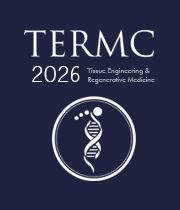Bioinformatics and Computational Modeling
Data-driven biology has become essential in decoding the complexities of regenerative systems. Bioinformatics and computational modeling are accelerating discoveries by integrating genomic, proteomic, and metabolomic datasets to uncover patterns that guide tissue repair, scaffold design, and cell differentiation. Through simulations and predictive modeling, researchers can anticipate cellular responses, optimize scaffold geometry, and personalize therapeutic regimens. These tools also help in reconstructing tissue microenvironments, mapping cell signaling pathways, and identifying gene regulatory networks critical to regeneration. Bioinformatics and computational modeling empower the development of digital twins for patients, supporting virtual testing of treatment strategies and minimizing trial-and-error in lab settings. As machine learning algorithms grow more sophisticated, their synergy with computational biology is opening new frontiers in precision tissue engineering. From predicting graft rejection to identifying ideal stem cell candidates, these technologies are central to the next generation of regenerative interventions.

Nagy Habib
Imperial College London, United Kingdom
Lucie Bacakova
Institute of Physiology of the Czech Academy of Sciences, Czech Republic



Title : AI-integrated high-throughput tissue-chip for space-based biomanufacturing applications
Kunal Mitra, Florida Tech, United States
Title : Stem cell technologies to integrate biodesign related tissue engineering within the frame of cell based regenerative medicine: towards the preventive therapeutic and rehabilitative resources and benefits
Sergey Suchkov, N.D. Zelinskii Institute for Organic Chemistry of the Russian Academy of Sciences, Russian Federation
Title : In vitro evaluation of lyophilized Dedifferentiated Fat cells (DFAT) impregnated artificial dermis
Kazutaka Soejima, Nihon University, School of Medicine, Japan
Title :
Nagy Habib, Imperial College London, United Kingdom
Title :
Alexander Seifalian, Nanotechnology & Regenerative Medicine Commercialisation Centre, United Kingdom
Title : The regenerative medicine of the future
Marco Polettini, DVM, Italy